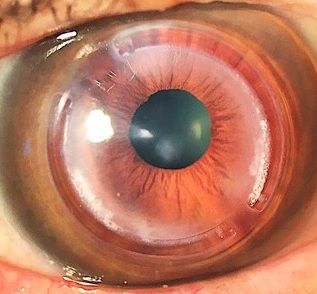Chitosan-coated contact lens-based ophthalmic drug delivery system to manage Acanthamoeba keratitis: A preliminary hypothesis
Medical hypothesis, discovery & innovation in optometry,
Vol. 2 No. 3 (2021),
14 March 2022
,
Page 114-118
https://doi.org/10.51329/mehdioptometry134
Abstract
Background: Acanthamoeba species can cause devastating contact lens (CL)-related microbial keratitis. Its culture is less sensitive, and little evidence is available for the safety or efficacy profile of medications. Therefore, early diagnosis and optimal treatment remain difficult. The aim of this study was to present the hypothesis that a novel chitosan-coated CL-based ophthalmic drug delivery system has therapeutic and prophylactic effects on acanthamoeba keratitis.Hypothesis: CL-based drug delivery is a popular sustained-release drug delivery that extends the drug release time, thus increasing its bioavailability and treatment efficacy. Chitosan, a derivative of chitin, has antioxidant and broad-spectrum antimicrobial properties against fungi, yeasts, and bacteria. It acts against microbial cells; however, whether its mechanism of action is microbiostatic or microbicidal remains unknown. It exhibits wound healing and film-forming properties. Chitosan composite films permit high transmittance of visible light, making it transparent and therefore desirable for the development of CLs. Chitosan/Ag/ZnO blend films exhibit antimicrobial activities. Further, soft CLs coated with chitosan, sodium hyaluronate, polylysine hydrobromide, and sodium alginate show drug delivery properties and reduced bacterial growth. Recently, concentration-dependent anti-amoebic activities of chitosan and nano-chitosan against the trophozoite and cystic forms of Acanthamoeba have been reported. Based on the existing evidence, we hypothesized that a chitosan-coated CL-based ophthalmic drug delivery system could have therapeutic and prophylactic effects on acanthamoeba keratitis or subsequent endophthalmitis.
Conclusions: CLs or intraocular implants with chitosan-based nanocoatings alone or in combination with routine treatment may be preventive or therapeutic for acanthamoeba keratitis or endophthalmitis. Experimental studies and further clinical trials are required to explore the efficacy and safety profile. Moreover, randomized controlled trials in healthy eyes with soft or hard CLs or orthokeratology lenses for refractive error correction may shed light on the prophylactic effect of this novel drug delivery system. Other forms of ophthalmic drug delivery systems using chitosan-based nanocoatings should be studied additionally.
Keywords:
- microbial keratitis
- acanthamoeba
- chitosan
- chitin
- antimicrobial
- bacteria
- yeast
- fungi
- contact lens

- Abstract Viewed: 0 times
- Full Text PDF Downloaded: 0 times